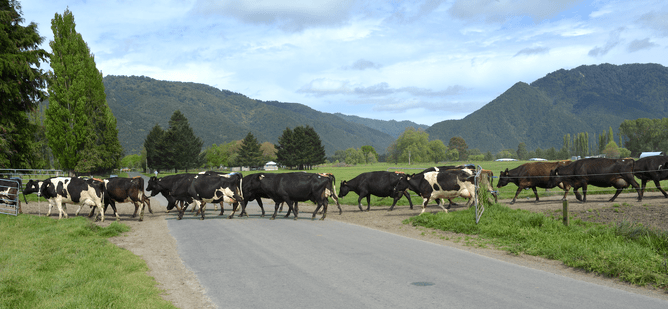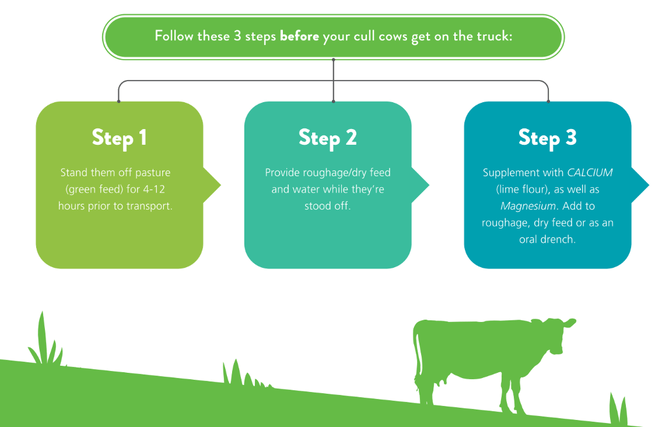Check out these important things to consider before loading your cows onto a truck.
Unfortunately, there comes that day when you need to send your cull cows to the works.
Just getting these animals out of the paddock and putting them straight onto the truck isn't enough and can cause health and animal welfare issues. This isn't something you want for girls that have served you well for years (and you probably don’t want to pay any fines either)!
Despite everyone's efforts to ensure animals don’t have to wait too long at the works, cows can end up waiting in lairage for 12-24 hours, or sometimes even more.
While there will always be water available for them, there won’t be much else. So, if they have already been on a very long journey, it could be that some cows end up being off feed for a long time.
Pre-travel considerations
To avoid down cows at the works, or any fines, there are a few things to consider before you load them onto a truck:
1. Are they fit for transport?
To be considered fit for transport, cows need to be
at least BCS 3,
not lame,
acting normally (no lethargy or staggering),
free of any injuries or active infections,
healed (and free from discharges) from any wounds or other skin lesions,
clear of pink eye and any discharges from their eyes. (Cancer eye lesions are only accepted in certain situations),
out of any withhold.
If you have any concerns about whether your animal(s) is fit for transport, please call the clinic, as cows with certain conditions can still go with a vet certification. This is not just a piece of paper - cows with a vet cert will get priority at the works as well.
2. Sending pregnant cows:
If they are within four weeks of their calving date, travel should be less than two hours.
Avoid putting heavily pregnant cows on the top deck of the truck.
Those that are very close to calving and likely to calve shouldn’t be transferred at all.
Once you have established that the cows are fit enough to travel, there are a few other things you could do to prepare them for transport.
3. Milking:
If cows are still milking, make sure they are milked very shortly before they are picked up so that udders don’t blow up.
4. Essential trace elements:
Culls cows need extra magnesium and calcium before they get transported to avoid them going down on the truck, or upon arrival at the works.
This is because they are still in lactation mode and they rapidly deplete the calcium reserves in their blood while off feed.
Dry cows can also suffer from low levels of blood calcium, so all cows should be properly prepared, regardless of lactation status!
Providing them with magnesium and calcium before they travel can prevent this issue.
MPI recommendations for preparing dairy cattle for transport with essential trace elements are:
Stand dairy cows off pasture for 4-12 hours before transport, BUT, provide roughage/dry feed and water until loading on the truck.
You can then add calcium and magnesium to the hay/baleage/palm kernel.
Add 100 grams of lime flour per cow to feed during stand off. This provides each cow with 35g of calcium. Any alternative supplement used must contain the equivalent amount of calcium.
Also give 60g of Causmag to cover the magnesium requirements.
It’s a lot to take in and remember. DairyNZ has provided guidelines as well.


